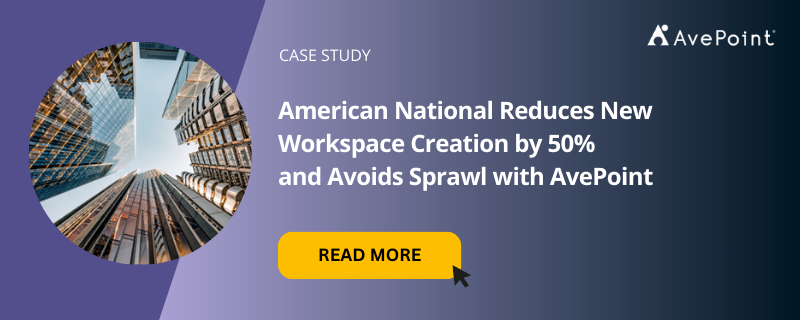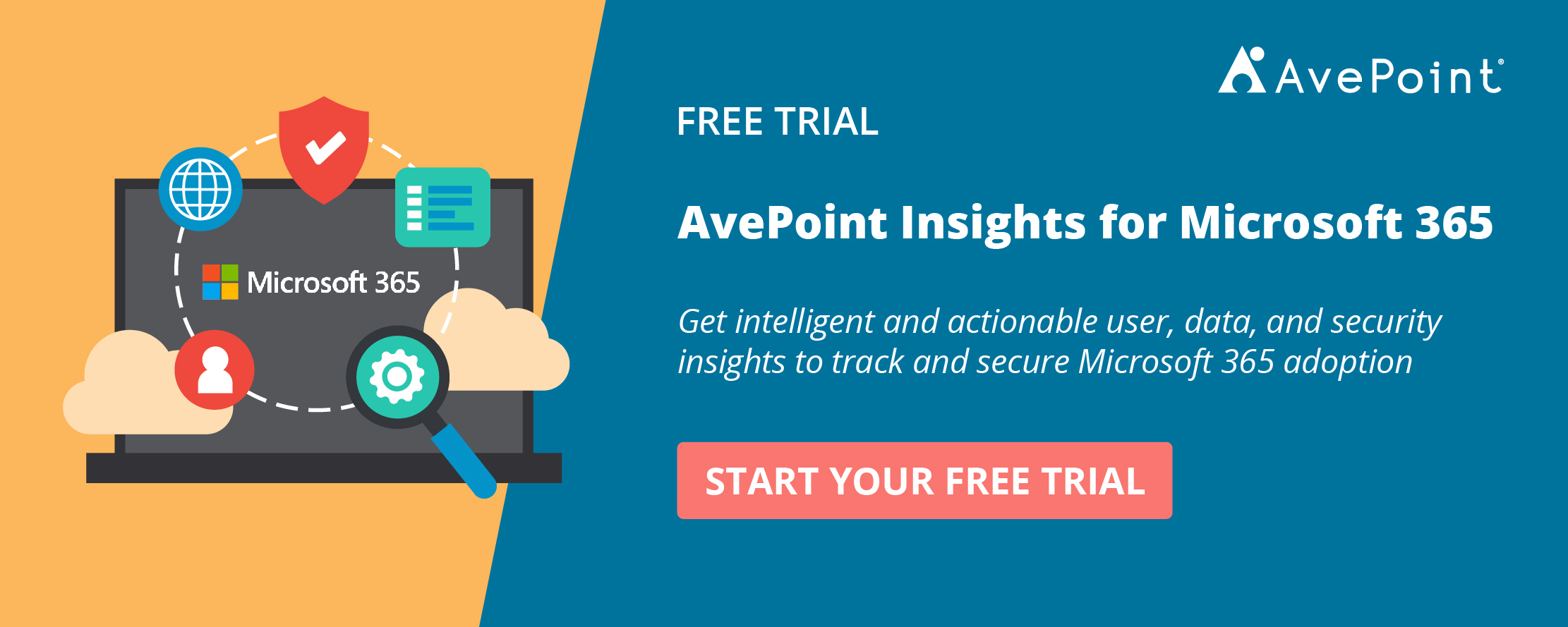Combating Data Growth: Quick Ways to Fortify Your Microsoft 365 Data Access Governance Strategy

Organizations are increasingly turning to cloud-based solutions like Microsoft 365 to streamline their operations and enhance productivity. In fact, Microsoft 365’s paid seats total to over 400 million at the start of 2024.
While using such platforms, organizations create huge volumes of data for internal records, consumption, and sharing. Today, 64% of organizations manage at least 1 petabyte (PB) of data, while 41% have at least 500 PB, according to the AI & Information Management Report.
A solid data access governance approach is essential to combat the challenges of growing data volumes in the organization. For instance, some organizations may begin with setting up structured processes for creating workspaces and requesting access, which typically will lead to a complete lifecycle management of workspaces and user management.
However, for organizations to model out the structure for workspaces and access, they must also have a clear view of the risks that exist in the workspace and those that may potentially cause security incidents in the future.
In this blog, we’ll delve further into the benefits of complementing your data access governance with risk management tactics.
3 Ways Risk Management Tactics Contribute to Your Data Access Governance Strategy
1. Collaborate on Risk Management Practices
Cyber incidents (36%) and business interruptions (31%) are the top risks for organizations in 2024, according to Allianz. This isn’t surprising because as more content is stored in cloud platforms like Microsoft 365, security risks inherently increase; having the proper data security measures to manage data and workspaces to avoid cyber incidents and downtime is fundamental.
Inactive workspaces that give rise to sprawl and information exposure from lack of permissions contribute to risks in an organization’s digital environment — increasing the attack surface for cybercriminals.
While you can set frameworks and guides for users to oversee configuration settings, as well as permissions requests and changes, organizations need to create a fusion team concept to have a holistic tenant view of potential risks as they come. By setting up a fusion team focused on data access governance, you can ensure that the risk definition and thresholds set by leadership and the broader organization are appropriately deployed into the tenant(s).
Reporting tools, such as AvePoint Insights for Microsoft 365, provide comprehensive security reports on Microsoft 365, which can help administrators define what activities they consider as risks and provide real-time notifications when they occur in the workspace.
Through the out-of-the-box Risk Assessment Report and Matrix, IT can create a visualization to bring to the data access governance team to show progress on the security of the tenant(s) and focus the team on high-risk action items that may need discussion to increase the data security posture of the digital workplace.
2. Avoid Workspace Sprawl
A company with about 1,000 employees creates about 50 Teams each month on average. Since enterprise data sits inside various applications, such as Teams, SharePoint, and OneDrive, managing permissions on all these workspaces can be difficult and time-consuming.
In some instances, a group creates a workspace for a specific project or campaign and then stops using it and forgets about the existence of such workspace.
While these workspaces are crucial for work processes, the absence of proper monitoring and lifecycle management will cause duplicate workspaces, with many unused ones sitting in your digital infrastructure. This takes up storage space, potentially adding costs for increasing cloud storage. Furthermore, it increases the risks of retaining access to users or third parties beyond the period they should have access to these workspaces, which can compromise your workspace security.
AvePoint Cloud Governance enables organizations to prevent sprawl by creating lifecycle policies to govern workspaces, such as groups, teams, and sites. Combining that with AvePoint Insights gives you a comprehensive view of business data across different applications, such as Teams, SharePoint, and OneDrive. This includes analytics of different workspaces and visit statistics, allowing organizations to understand which workspaces are necessary and no longer needed for departments and the entire organization, giving them objective, quantitative information on optimizing workspaces. Admins can also receive usage reports of individual sites, as well as the consumed storage for each of these sites.
For example, using Cloud Governance with Insights, American National reduced their workspace requests by 50%. In effect, the company has managed to decrease storage costs and control workspace collaborations, and the admins see these results in the regular reports from Insights.

3. Improve Access Permissions Management
Effective permission management is the cornerstone of a secure and collaborative digital workspace. It helps mitigate access to sensitive information, which is crucial for maintaining the integrity and security of business data. Permissions determine who can access which documents within digital workspaces, such as Teams, SharePoint, and OneDrive in Microsoft 365.
Imagine if employees have access to data – including personal identifiable information (PII) and other internal documents – that they don’t need and shouldn’t have access to. Not only that, business operations may also entail providing workspace access to some guest users, including vendors or clients.
This becomes more crucial as organizations integrate AI tools, like Microsoft 365 Copilot. Absent proper control, employees can launch a prompt that may entail providing information that they shouldn’t have information on — for instance, when asking AI about upcoming projects of the company, it could share a confidential document in the engineering department about a product that’s still in research and development phase.
The point is, access to confidential organizational data and workspaces entails risks of being misused intentionally or unintentionally, which could lead to data breach and data loss — both could cause financial and operational damages to any organization.
IT teams are usually in charge of maintaining the security of a company’s digital infrastructure, which includes who can access workspaces. However, numerous access requests are taking their time away from other crucial IT tasks. In fact, according to the State of DataOps, securing data and implementing privacy controls (27%) is one of the top three data management activities that consume time, effort, and energy among IT teams.
Organizations need to streamline permission management to lessen the burden on IT teams while ensuring nothing slips through the cracks. This can be done through a permission management tool that allows business admins to implement permissions within Teams groups, OneDrive folders, or SharePoint sites. For example, an admin can set that only the HR department can access the SharePoint site about the PII of all employees. By doing so, the company ensures that employee information remains confidential and won’t be accessed by anyone in the organization or other third-party contacts.
For example, Cloud Governance helps set and control how workspaces, such as Teams groups and SharePoint sites, are requested and created, removing the burden of numerous requests on IT teams. When paired with AvePoint Insights, assigned department admins gain a 360-degree view of all user activities across the Microsoft 365 tenant and receive alerts about potential high-risk activities with these permissions. Insights also aggregates sensitivity and activity data across the enterprise’s tenant, so critical permissions issues are prioritized for action.
Beef Up Your Data Access Governance Approach with AvePoint Insights for Microsoft 365
Securing digital workspaces doesn’t end with putting policies and controls in place. Extensive information on user and permission activity and access is vital to an effective data access governance strategy; it ensures data quality, seamless collaboration, and immediate response to risks.
Adding AvePoint Insights for Microsoft 365 to an existing data access governance strategy can significantly enhance an organization’s ability to effectively monitor their digital environment at the Microsoft 365 tenant level. The detailed security reporting provided by AvePoint Insights for Microsoft 365 helps admins focus on the most critical issues before risks escalate and offers detailed information on the business impacts of workspace permission controls and user activity monitoring in your security posture.
Learn more about AvePoint Insights and how it complements your data access governance strategy.

Phoebe Magdirila is a Senior Content Marketing Specialist at AvePoint, covering SaaS management, backup, and governance. With a decade of technology journalism experience, Phoebe creates content to help businesses accelerate and manage their SaaS journey.



